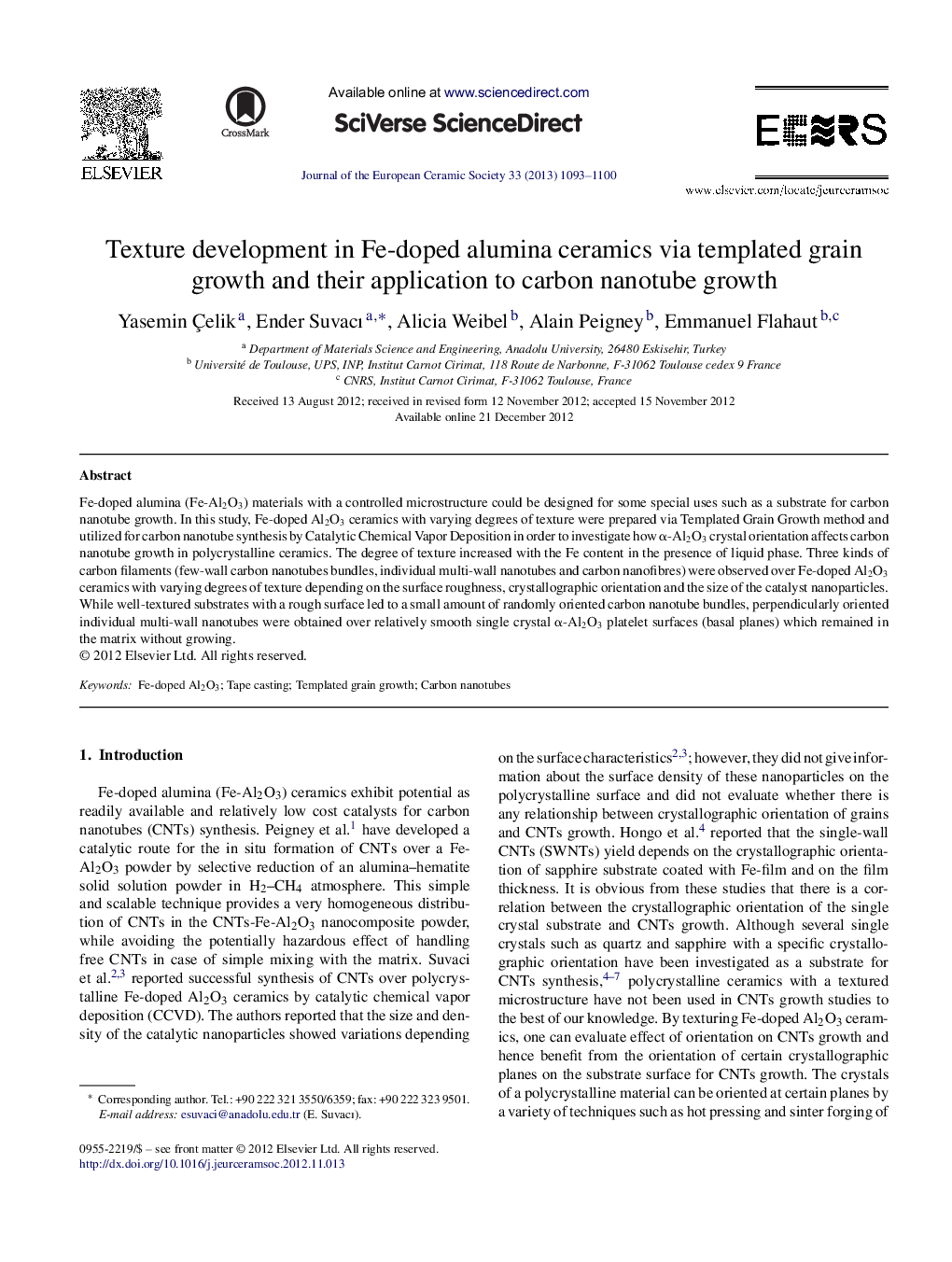| Article ID | Journal | Published Year | Pages | File Type |
|---|---|---|---|---|
| 1475711 | Journal of the European Ceramic Society | 2013 | 8 Pages |
Fe-doped alumina (Fe-Al2O3) materials with a controlled microstructure could be designed for some special uses such as a substrate for carbon nanotube growth. In this study, Fe-doped Al2O3 ceramics with varying degrees of texture were prepared via Templated Grain Growth method and utilized for carbon nanotube synthesis by Catalytic Chemical Vapor Deposition in order to investigate how α-Al2O3 crystal orientation affects carbon nanotube growth in polycrystalline ceramics. The degree of texture increased with the Fe content in the presence of liquid phase. Three kinds of carbon filaments (few-wall carbon nanotubes bundles, individual multi-wall nanotubes and carbon nanofibres) were observed over Fe-doped Al2O3 ceramics with varying degrees of texture depending on the surface roughness, crystallographic orientation and the size of the catalyst nanoparticles. While well-textured substrates with a rough surface led to a small amount of randomly oriented carbon nanotube bundles, perpendicularly oriented individual multi-wall nanotubes were obtained over relatively smooth single crystal α-Al2O3 platelet surfaces (basal planes) which remained in the matrix without growing.
